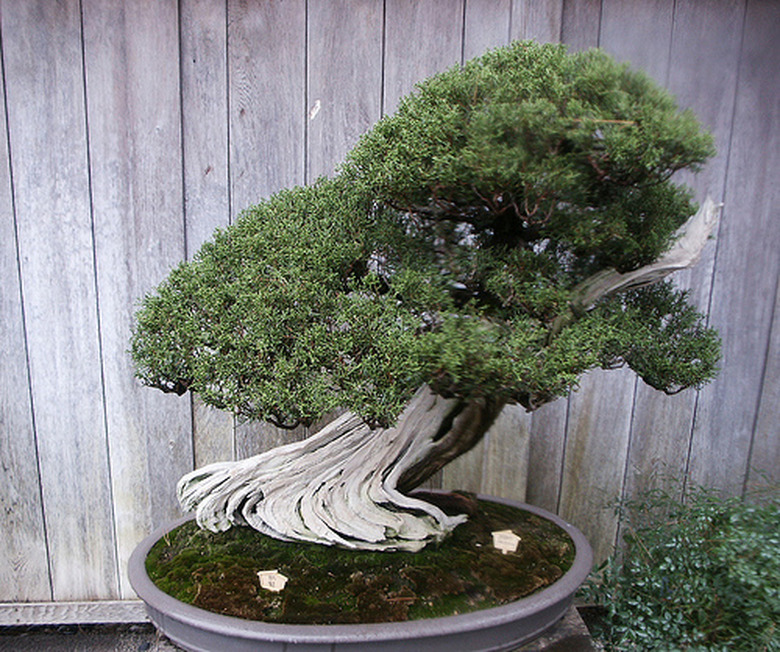How To Grow Bonsai Trees From Regular Trees
Things Needed
- Bonsai container or pot
- Wire
- Water
- Fertilizer
The art of bonsai involves the growing of trees and plants in small pots or containers. Though the exact origins of the art are unclear, the earliest Chinese legends indicate its origins from the Han Dynasty of 206 B.C through 220 A.D. Contrary to common belief; the bonsai tree is grown from seeds or saplings of regular trees. The art requires regular and avid pruning of the tree's crown and roots to configure and maintain a miniature size.
Step 1
Select your tree based on your own personal needs and wants. Although some people choose their tree based on the tree's aesthetics, others choose their trees based on hardiness and characteristics. The option is completely up to you. Still, select a very young tree that is still small in size. It is important to understand that there is no special bonsai tree or preferred selection. Bonsai trees are ordinary, regular trees that are cultivated to be small in size. The most popular customer selections are maple, oak and beech.
- The art of bonsai involves the growing of trees and plants in small pots or containers.
- Although some people choose their tree based on the tree's aesthetics, others choose their trees based on hardiness and characteristics.
Your tree's pot or container must be small to medium-sized. This will help the tree to grow into its forced container size. It is important that the tree remain in its original container until it completely matures. Therefore, choose a container that appeals to you and the room's décor.
Step 2
Water your tree regularly, about every two to three days. Adjust the water schedule according to the conditions. Consider the humidity and weather conditions, soil moisture and pot size. Always water your plant in the early part of the day and at the time same time each watering day. Make sure that the container is properly drained to ensure that excessive water does not rest on the roots of the tree. This can cause serious tree damage and promote disease.
- Your tree's pot or container must be small to medium-sized.
Step 3
Fertilize your bonsai tree only when it is healthy and the soil is moist. During the growing season, apply fertilizer every three to four weeks in half strength. Adjust the schedule according to the surrounding conditions and size of the tree. Very small trees require very small amounts of fertilizer, mixed thoroughly into the soil. Increase the fertilizer amounts as the tree develops and grows in size. If you want your bonsai tree to remain fairly small, keep your fertilizer amounts to a minimum.
Step 4
Trim and prune your bonsai tree regularly. This practice will maintain the tree's miniature size. Trim the roots of the tree as they develop. A smaller and thinner root system will promote a smaller sized tree. Keep the tree's crown, branches and foliage trimmed and thinned. Be systematic and never remove all of the tree's new growth at one time. This can seriously damage the tree and stunt its overall growth. Wrap thin wires around the trunk and branches to promote the desired shape of the tree. Leave the wires in places for at least six months. Cut the wire from the tree in small pieces.
- Fertilize your bonsai tree only when it is healthy and the soil is moist.
- Wrap thin wires around the trunk and branches to promote the desired shape of the tree.
Step 5
Repot your bonsai tree once it is mature and has grown into the desired shape. Schedule the repotting for a day that would normally be reserved for pruning and trimming. Transfer the tree into its new pot but do not prune on that day. Avoid feeding and fertilizing the tree for at least three weeks after the transfer. Water the tree lightly after transfer and again in two days before reverting back to the original watering schedule.
